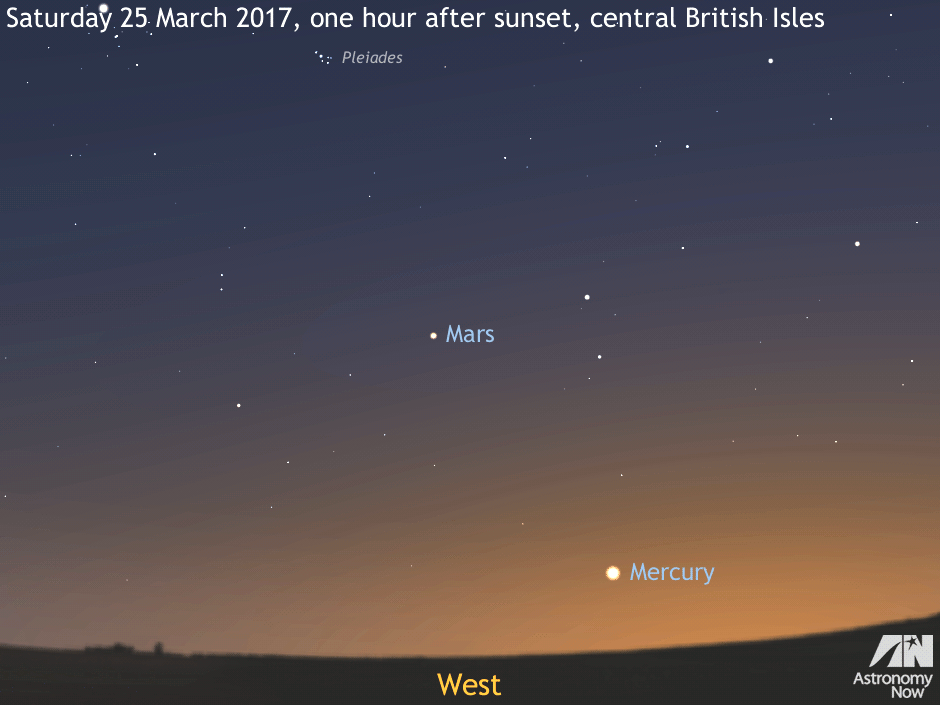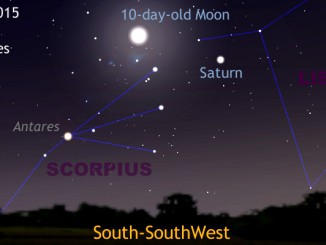
For a convenient celestial guide to the innermost planet, on Wednesday 29 March look very low due west an hour after sunset (8:40pm BST for the heart of the UK, click here for other locations) to see magnitude -0.4 Mercury 8 degrees to the right of a 43-hour-old slim crescent Moon.
Mercury begins April as a magnitude -0.1 object in the constellation Aries at its greatest easterly elongation of 19 degrees from the Sun, in what is the best evening apparition of the year for Northern Hemisphere observers owing to the favourable inclination of the ecliptic to the western horizon.
As seen from the heart of the British Isles at 9pm BST, the innermost planet can be found almost 6 degrees above the west-northwest horizon from 1-8 April. Thereafter, Mercury’s brightness drops rapidly as its orbit brings it between us and the Sun. The innermost planet is at inferior conjunction on the morning of 20 April and crosses the border into Pisces the following day.
Inside the magazine
For a comprehensive guide to observing all that is happening in the coming month’s sky, tailored to Western Europe and North America, obtain a copy of the April 2017 edition of Astronomy Now.
Never miss an issue by subscribing to the UK’s biggest astronomy magazine. Also available for iPad/iPhone and Android devices.




